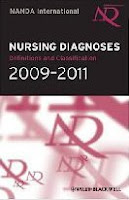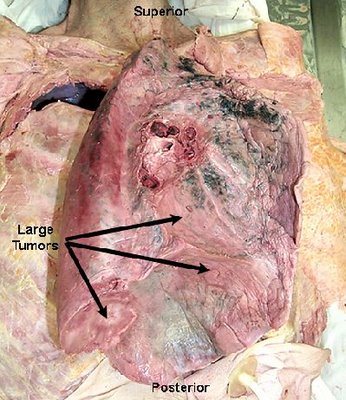Sugar exists in most foods we eat but sugar isn't nearly the bad guy. Sugar isn't a "slow poison," and doesn't cause cancer, diabetes, or heart disease, as some have claimed, nor is there evidence it causes behavior problems, such as hyperactivity. Small amounts of sugar have an important place in nutrition. For example, the only fuel the brain uses is sugar. There is some evidence showing sugar to have a calming effect on normal and hyperactive children. Too much sugar, on the other hand, like too much of anything, is detrimental to our health and eating too much sugar does contribute to tooth decay, obesity, constipation, and malnutrition.
According to some expert, it's added sugar, not fat, that causes chronic overeating and adds extra pounds that won’t budge. Their solution: Slash sugar from the diet completely. Find out what the experts say about the truth--and the hype--when it comes to the sweet stuff.
Sugar Myth #1: You should eliminate all sugar from your diet.
First, a quick and painless science lesson: Sugars, aka carbohydrates, are made of carbon, hydrogen and oxygen. Individually, these strings of molecules are called monosaccharide, which include sugars such as fructose (found in fruit). Link two sets of molecules together and you have disaccharides, such as sucrose (table sugar) and lactose (the sugar found in milk). Combine a whole bunch of units, producing an even more complex molecule, and you've got starches and fiber.

And no matter what form you eat--from M&M to Lollypop--carbs contain 4 calories per gram, break down to simple sugars during digestion (except for fiber, which is indigestible) and are either used for immediate energy or stored for later. In other words, you need sugars in your diet to keep your body running. Most should come in the form of nutrient-rich starches like whole grains and cereals. You should also eat plenty of fruits, vegetables and low fat dairy products--which contain sugars, but also valuable vitamins, minerals and disease-fighting chemicals.

The kind of sugar that concerns health experts is added sugar--the sweeteners that are dumped into foods by manufacturers (and sometimes us, when we ladle out table sugar)--because most people eat way too much of it. In fact, for the first time ever, experts identified added sugar as a part of our diet that we should limit. Why? Consuming lots of high-sugar foods such as cookies and soft drinks not only can lead to weight gain, but these foods often replace more nutritious fare.
If you eat a healthy diet and meet your nutritional needs on most days, you can still enjoy guilty pleasures like a decadently sweet dessert or an occasional sugary soda. To give you an idea of how far your daily sugar quota goes one Hershey's milk chocolate bar has about 5 teaspoons of sugar, a Coke pack 10, and a 10-ounce Butterfinger McDonald's McFlurry contains nearly 14 teaspoons!
Sugar Myth #2: It makes you fat.
Many diet books claim that sugar itself causes the body to store more food as body fat, and so even the natural sugars found in fruit should be avoided. But most health experts say that's misguided reasoning. Fruits and vegetables are loaded with good-for-you substances. The extra calories from added sugar in the diet are the real cause of unwanted pounds. Sugar is a significant factor when it comes to obesity, Obesity rates have raised as our intake of added sugar has climbed. If you eat a lot of empty calories, you run the risk of excessive calorie intake and weight gain.

Sugary soft drinks and fruit-flavored beverages, the biggest source of added sugar in the diet, may lead to extra pounds in an especially tricky way. Research has shown that the body doesn't compensate for calories taken in as liquid as it does for calories eaten as food (in other words, after gulping a 300-calorie supersize soda, you'll still eat the same-size dinner). Another pitfall of high-sugar diets that may lead to weight gain: People who eat larger amounts of sugar generally have worse diets.
Sugar Myth #3: White table sugar is the worst form.
Cookies sweetened with fruit juice may seem like a healthier option, but don't be fooled by this marketing trick. Whether you eat white table sugar or fruit juice, it all turns into glucose in your body. Despite certain diet-book claims that refined white sugar is "toxic," there's little difference between sweeteners (molasses does contain some calcium, but the quantity in an ordinary serving is too small to be significant). And even if a food is sweetened with fruit juice, the healthiest parts of the fruit--such as the fiber and disease-fighting phyto-chemicals--have been removed in the processing.
Sugar Myth #4: You can be addicted to sugar.
Wonder why sweet foods seem extra irresistible? Turns out we're born with an instinctive love of sweet foods--after all, in the hunting-and-gathering days, sweetness was a sign of a nourishing, high-calorie (not to mention nonpoisonous) food. If your desire for sugar seems especially uncontrollable, you may be hard-wired to desire sweet treats even more. Researchers recently located a gene that drives a preference for sweet foods. But a lust for candy and doughnuts is probably more bad habit than true addiction. You can adapt to a lower-sugar diet by cutting a candy bar into thirds, eating one piece and freezing the rest for later. It's all about portion control.
Sure, a healthy diet can still include reasonable amounts of your favorite sugary treats. But chances are, you're taking in a lot of extra sweet stuff without even realizing it. Here are some painless ways to shave calories from sneaky sugar sources;
* Pass up sweetened yogurts--which can contain as much as 7 teaspoons of added sugar--and go with no-sugar-added varieties. Or slice fresh fruit into plain varieties.
* Learn to spot sugar's aliases: If dextrose, fructose, maltose, malt syrup, sucrose or corn syrup appear first or second in the ingredient list, the food is high in added sugar.
* consider sugary sodas a treat--as you would dessert--and regularly opt for water, nonfat milk, 100 percent fruit juice, or seltzer flavored with lemon or lime instead.
* Buy breakfast cereals with no more than 8 grams of sugar per serving.
* Choose fresh fruit over canned varieties packed in syrup, which are full of added sugar.
* Split oversized restaurant desserts with several friends, or box up the rest for later in the week.
* When baking, cut the amount of sugar you use by one-fourth or one-third.
* Check labels of packaged food billed as "low fat" or "fat free": They may have as much sugar (or more!) as the full-fat version.











































